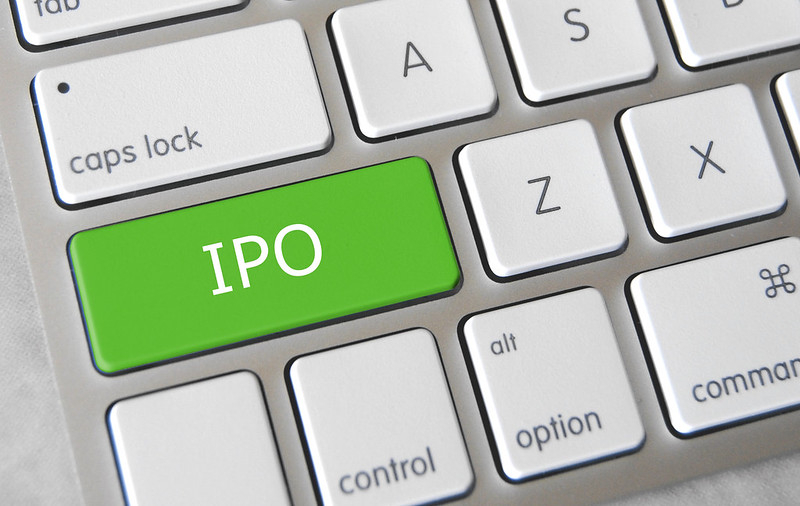Arm’s Listing Can Be The Tipping Point For IPOs To Make A Comeback

Image Source: www.gotcredit.com via Flickr
On Monday, Arm Holdings Limited submitted its initial public offering (IPO) form to the Securities and Exchange Commission (SEC). The UK-based computer chip designer is the world’s leading designer of central processing units (CPUs), graphics processing units (GPUs), and system-on-a-chip (SoC) architecture, widely used in mobile devices.
Japanese investment conglomerate, SoftBank, bought ARM in September 2016 for $32 billion, taking it private. Up until that point, Arm was listed on both the London Stock Exchange and Nasdaq. After giving up listing on the London Stock Exchange in 2022, SoftBank is now pursuing an exclusive US listing on Nasdaq.
What is Arm’s IPO Valuation?
Assessing IPO stock is a tricky business.
On March 31, 2023, ARM generated $2.67 billion in total revenue, down from $2.7 billion in the prior year. That may shift with the ongoing AI boom. At the end of May, Arm launched a new Immortalis-G720 GPU. It boosts performance and efficiency and is suited for mobile 3D scene reconstruction via machine learning (ML) agents.
Arm is also active in gaming, collaborating with Tencent Games and Epic Games to bring cutting-edge graphics to mobile platforms. As the dominant Internet-of-things (IoT) SoC designer, Arm’s revenue is expected to ramp up as smart cities come online.
Per SEC filing, Arm estimated its total addressable market (TAM) to stand at $202.5 billion by the end of calendar year 2022. This includes cloud computing, automotive, industrial IoT, network equipment, consumer electronics, and mobile chips.
By 2025, Arm’s TAM should reach $246.6 billion at a 6.8% compound annual growth rate (CAGR). However, this future earnings potential makes Arm’s IPO valuation unclear. At a minimum, SoftBanks expects a $64 billion valuation, twice the initial purchase price, per Reuters’ inside sources.
This range would align Arm as the largest IPO launch after Alibaba ($231B) and Meta ($104B).
SoftBank Needs Maximum IPO Valuation to Recoup Losses
Bernstein analysts took a different assessment approach last month. In contrast to the $60 – $70 billion range, they valued Arm at only $40 billion. This is the same price tag SoftBank offered to Nvidia in 2020. However, after the proposal triggered a law enforcement action by the Federal Trade Commission (FTC), the deal was canceled in February 2022.
The latest IPO filing is SoftBank’s next best scenario, to get even better investment inflows coinciding with a positive AI market boost. After SoftBank’s venture into failed WeWork, it would be a relief. The co-working startup attempted to go public in 2019, with SoftBank pouring $10.5 billion via its Vision Fund.
But in August 2019, WeWork was exposed to be a heavy bleeder, burning through $1.9 billion the year prior. In H1 2023, WeWork reported a $700 million loss amid its $13.3 billion long-term lease liabilities for workspaces.
In total, SoftBank’s Vision Fund reported a $48 billion loss in fiscal years 2021 and 2022. The losses range from Indonesian e-commerce companies GoTo and DoorDash to Chinese AI firm SenseTime. By selling Alibaba and T-Mobile shares, SoftBank shored up its ‘defense mode’ during that period.
Arm’s raised valuation was the main driver for Vision Fund’s booked gains during April-June, at $1.1 billion, as the first profit in five quarters. Arm excluded, the fund suffered a total loss of 13 billion yen ($89.1 million) during the period.
Arm as IPO Outlier
The annual launch of IPOs follows a similar trajectory to the historical rise of the M2 money supply, courtesy of the Federal Reserve. And just as the crypto market peaked by the end of 2021, so did IPOs.
(Click on image to enlarge)

Image courtesy of StockAnalysis.com
Out of 104 IPOs this year, approximating just $13 billion combined value, it is safe to say that Arm rides on the new AI market sentiment to break the stagnation. Nvidia led the rally with its impressive 218% YTD performance, with HSBC setting the new $780 per share price target.
Zooming out, the PHLX Semiconductor (SOX) index is at 41% YTD performance.
Arm is well-suited to materialize this AI-borne optimism, not as a manufacturer but as a chip designer with market dominance and a steady stream of chip licenses and royalty fees. For SoftBank, this could be a break or make moment after historic losses in the last two years.
More By This Author:
USDC To Be Launched On Six New Blockchains As Coinbase Invests In CircleDigital Asset Investment Products Saw Outflows Of $55M Last Week: Report
This Meme Stock Index Is Up 58% YTD As Firms Post Strong Quarterly Earnings



